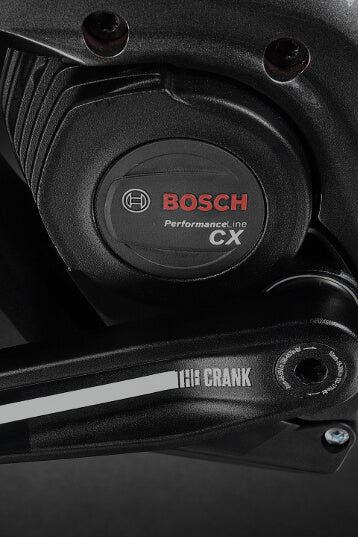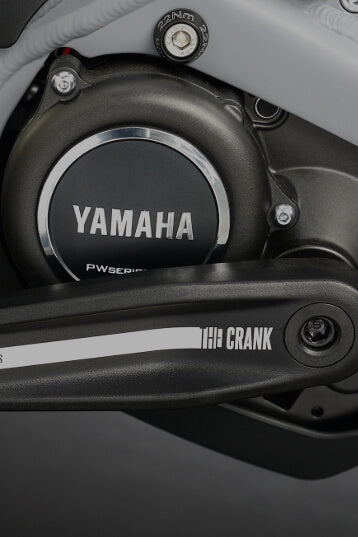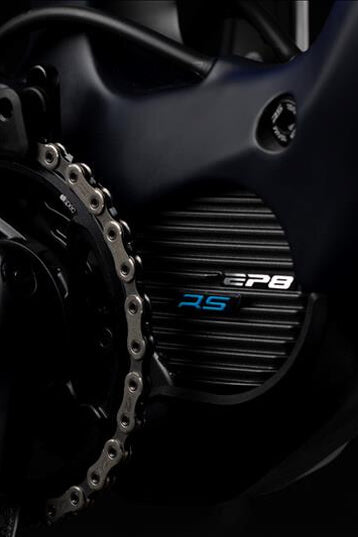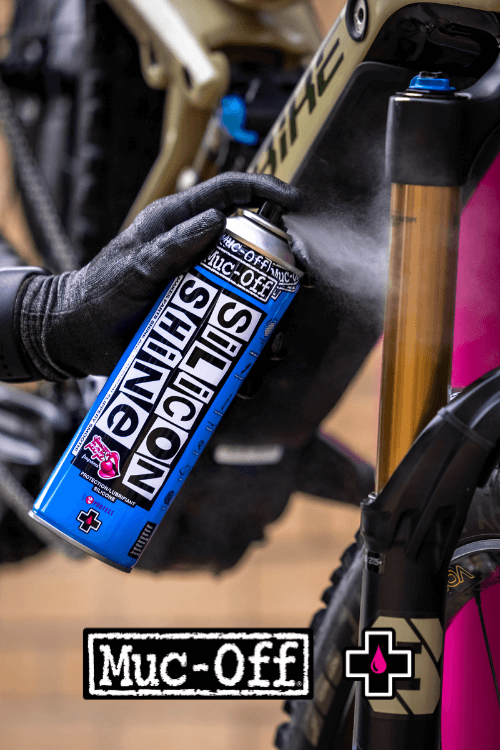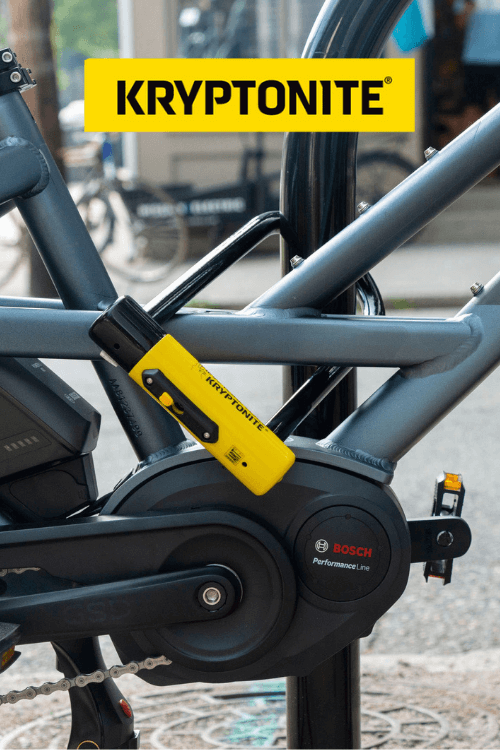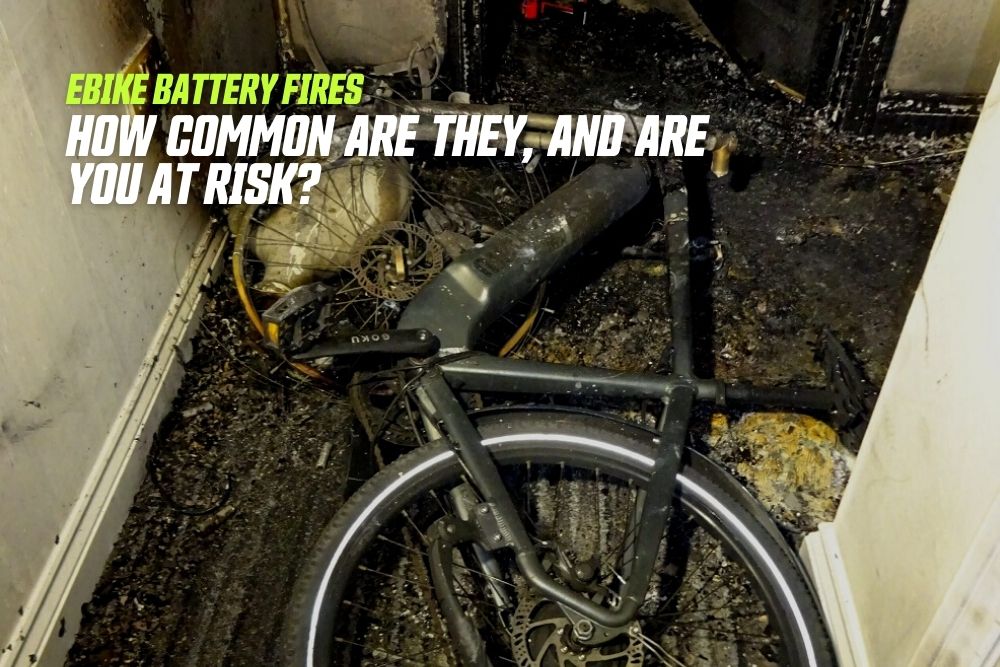
- NEWS
Electric Bike Battery Fires - What's inside and are you at risk?
By Ben Mowbray |
Lately it seems that every week, there's another sad story of a property having burned down or a person injured by an electric bike (or scooter) battery setting on fire either spontaneously or more often than not, while charging.
Are electric bike battery fires "common", or are we just seeing the worst of things? Also, why do electric bike batteries set on fire?
We've never discussed this before, largely because for us its a non-issue and we'll explain why.
We'll break down electric bike battery technology and discuss their components, and how they work together (or against each other) when at rest, in use, or when charging and what leads to disaster for some batteries.
This is going to be pretty comprehensive and in parts quite technical but we hope that breaking it down into chunks, it'll be easier to understand.
How often do electric bike batteries set on fire?
Thankfully, hardly ever. The media are always swift to jump on these stories which makes it appear more regular than it actually is.
In truth, the number of fires each year when put against the total number of batteries in circulation is proportionally very small indeed. We're talking fractions of a percentage.

Test photo courtesy of CellBlockFCS
According to a report by the Insurer Zurich, 167 fires in the UK were reported to fire departments and attributed to lithium-ion batteries fitted in electric bikes and scooters in 2022. When you pit this figure against the estimated 1 million electric scooters (a huge number given they're still illegal on public access spaces like road and paths outside of pilot test schemes in a handful of UK cities!) and over 500,000 electrics bikes, this means estimates would show just 0.0113% of electric bike and scooter batteries set fire while charging or in use in 2022. A tiny figure.
Sadly, none of the news outlets are posting daily to tell you how many batteries didn't set on fire today!
Before we get into what causes an electric bike or scooter battery to set on fire, we need a better understanding of how they work.
What's inside your electric bike battery.
Hold onto your underwear and perhaps put the kettle on. This is about to get technical...
Lithium Ion Cells.
Your electric bike battery is not one big battery but actually lots of individual "cells". (A "battery" is defined as more than a single "cell").
Lithium-ion cells for e-bike batteries come in lots of forms but the majority are built using 18650 cells. These look like your average AA battery. They're a little bigger, they're in fact 18mm wide and 65mm long and don't have any branding on them. (Lithium-ion cell form factors are "named" by their size).

Each of these cells has a "nominal" voltage normally around 3.6V, a fully charged voltage of 4.2V and an "empty" voltage of around 3.0V. More on that later.
These are all arranged in groups. These are called "series" and "parallel". Adding cells in series increases the voltage. Adding cells in parallel increases the capacity (the number of miles you can do between charges) and the amount of current you can pull from it.
For most of our bike batteries (Bosch and Yamaha), the nominal voltage is 36V, so it will have 10 cells in series (10x 3.6V = 36V).
Each cell has a rated "energy density" - the amount of charge it holds. This is normally measured in "Amp Hours" at individual cell level. This then converted to a "Watt Hours" rating by Bosch and Yamaha and is why your battery has a rating like "500Wh" or "625Wh". Its common however for Chinese/Far Eastern manufacturers to use the Amp Hour (Ah) rating when advertising capacity.
For example;
A 500Wh battery pack might be built using 3.6 Volt "nominal" 18650 cells with an energy density of 3.5Ah each.
10 in series gives a total nominal voltage of 36V (10 x 3.6V = 36V)
4 of these 10 "series strings" attached to each other in parallel means that the "Ah" rating of each cell (3.5) is multiplied by the number of parallel strings (4), giving a total battery pack energy density of 14Ah.
To convert this figure to "Wh", you simply multiply the Ah rating by the packs nominal voltage, and so 14(Ah) x 36(V) becomes 504Wh. This is normally rounded.
Important Safety Notice - Never open any lithium-ion battery pack, even to peek at the insides. They're not designed to be user serviceable and short circuits across exposed busbars/wires can lead to fire in seconds, releasing hot, poisonous gasses. They're notoriously difficult to put out too.
The Battery Management System or "BMS".
Your battery management system is a normally small printed circuit board and its primary purpose is to control the charging and discharging of the pack, as well as monitoring the voltages of cell groups.
You might have heard the words "balance charging" before, and this is a function of your BMS where a battery doesn't have a separate "balance lead" for charging (normally found in removable battery packs for remote control vehicles for example).
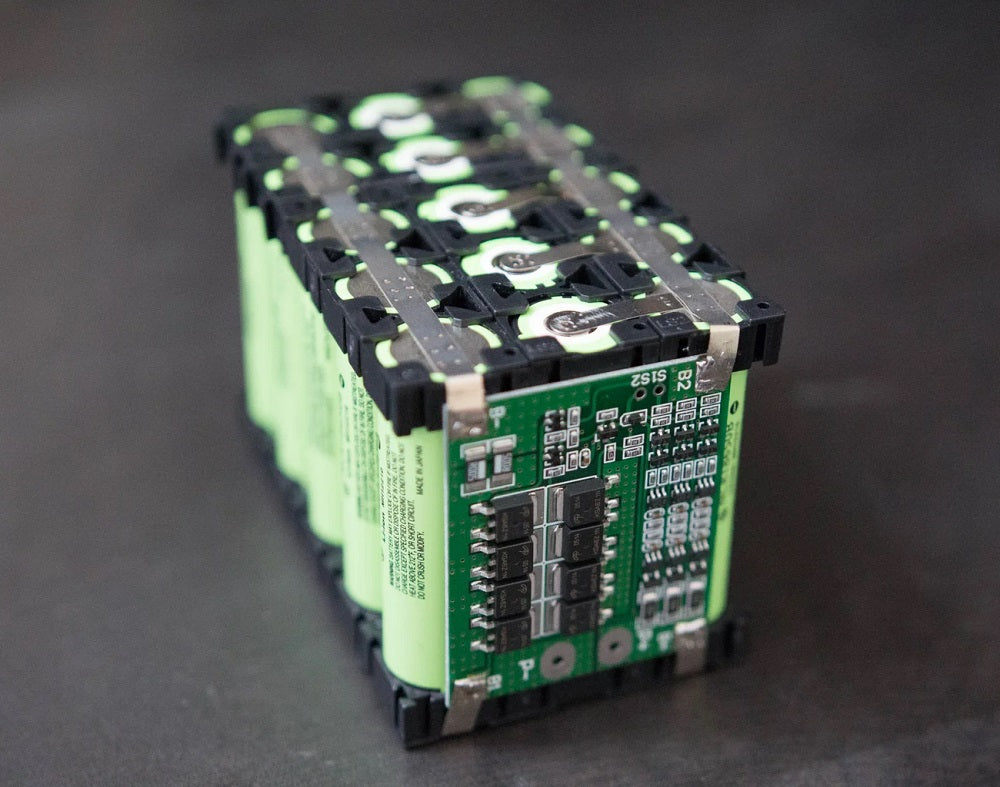
Its imperative that your battery remains "balanced", IE, the voltages of each of the series strings remains the same (or within very tight tolerances) as the others in the pack so using the example above, at its nominal voltage (around half charged), each of the 4 parallel strings should be showing 36V each.
If this isn't the case, a good quality BMS should shut the battery down and stop it from being charged or discharged.
If this happens in a Bosch system for example, you may see ERROR 530 on your screen and two lights on the battery indicator light will flash if removed from the bike. In most cases, this is unrecoverable and we'll go into why a bit later.
Essentially, your BMS is a safety device designed to keep the battery within optimal tolerance and monitor for any potential danger during charging and discharging.
Other components.
As well as the cells and your BMS, your battery pack will also include some form of "sled" or housing for the batteries. This allows the cells to be securely held in place (normally a few mm away from each other to aid cooling) to prevent them from being damaged by the vibrations of ordinary use and handling along with accidental drops.
You'll also find (except you wont, because you followed the safety warning and didn't open it.. did you!) wiring from the BMS to the charge port for charging and discharging, wiring from the BMS to each of the cell groups to monitor voltage and to your little charge indicator lights and button, interconnecting nickel strips allowing current to flow through the cells and likely some foam padding to further protect the whole assembly from vibrations.
The difference between top manufacturer and Far Eastern/DIY batteries.
Now that we have a much better understanding of what is (or should be) inside your electric bike battery, we can start to look what what causes an electric bike battery to set on fire. This is a big question with a huge number of factors and variables and is why we needed to take a shallow dive inside an electric bike battery first.
Its well known that the majority of battery fires are either caused through user negligence, poorly maufacturered/DIY batteries, or both.
The main supporting evidence of this is widely known in the industry. E-Bikeshop alone have, in the last 15 years, created over 20,000 new eBike riders in the UK and around the world. We exclusively sell European manufactured bikes using mostly either Bosch or Yamaha systems. We do not sell or work on bikes imported from the Far East. We've had ZERO battery fires.
By the statistics mentioned at the start of this article, with that number of new bikes on the road we should have had around 3. We haven't.
So what's the difference?
Bosch, Yamaha and other top manufacturers
These companies use only the very best cells inside their batteries. Normally these will be manufactured by Samsung, LG, Murata (Sony), Panasonic/Sanyo, etc. The final assembly isn't generally done by Bosch/Yamaha/others themselves, but proper, ISO standard/regulated battery manufacturing factories and laboratories. These companies use the very best manufacturing techniques for cell to cell welding and fusing, exceptional quality battery management systems with multiple failsafe systems which can detect cell level issues before they become a problem for the user and with exceptionally tight tolerances.

They provide proper, globally accredited/certified chargers and their battery management systems are programmed in way which never stresses individual cells to their limit. They have a built in safety margin for charging and discharging (while riding) for safety and longevity of use.
"Other" manufacturers and DIY.
More often than not either Chinese or other Far Eastern imported cells or batteries have a online documented history as lengthy and terrible as you can possibly imagine. Trumped up cell performance statistics, poor (or none at all) safety records, shoddy manufacturing practices, cheap materials and components all add up to a potential disaster waiting to happen.
Added to this, lithium-ion cells in many formats (which were never intended for end user availability) are widely available through online retailers. A competent person with sound electrical knowledge/qualifications really can build a very good quality pack in their own garage with an entry level battery spot welder and YouTube is awash with "How To" videos on how to do it. Its not rocket science, if its done right.
The downside to this is that they're available to anyone with internet access who wont necessarily follow the basically electrical engineering principles to the letter and this is where the danger begins. DIY batteries without a BMS, soldered instead of spot welded cell connections, poor heat management, wrong gauge of wiring for the desired current and other cheap materials all adds up to a potential fire in the making.

Finally, we can answer the burning question...
What causes electric bike batteries to set on fire?
Here are the most common reasons batteries set on fire;
Overcharging
This happens when either the charger doesn't shut off or the BMS allows the system to be overcharged in two ways. Too much charge, too quickly, or both. Its a bit like a balloon. You can only get so much in before it pops. Overcharging a cell forces a chemical change which generates heat. The heat causes cell "burst discs" (if fitted at all, cheap ones don't even have them!) to "vent" the excess pressure. Those that don't have them, simply explode.
Likewise, all batteries have safe charging rates. Trying to charge a battery much faster than it was designed for is like trying to force marbles down a paper straw only wide enough for peas. In the same way the straw would split, this extra charge is turned into heat via electrical/chemical resistance, and it'll vent/explode, highly likely resulting in fire.
Over discharging
This comes in two parts, capacity, and current. Unlike the Alkaline Manganese Dioxide AAA batteries in your TV remote which start with 1.5V and when they reach 0V you thrown them away, Lithium-ion cells have a "Depth of discharge" or "DoD" limit. This is normally around 3.0V and at this point, it would be considered "empty", so you never fully discharge the battery. Occasionally dipping under this figure by tiny margins is no problem, however this is one function your BMS provides. Cheap BMS systems with poor tolerances or worse, no BMS at all, can allow a battery to be continually over-discharged which damages their internal chemistry. The further this damage goes, the more the internal resistance of the cell rises. This resistance weakens the cells ability to expend its energy and instead, turns it to heat. The rest by now is probably obvious.
Over discharging can also happen in the way of pulling too much current from the battery too quickly. Batteries, based on the cells used inside and their configuration, have maximum discharge rates. Its the marbles and the straw scenario above, with the same outcome.
Poor quality or no BMS
As well as helping to limit the above two scenarios, bad quality BMS systems have been known to malfunction and cause shorts, leading to fires while the battery was just sitting unused.
No BMS system in a modern, high voltage/current battery system for end user/domestic use is just asking for trouble. It completely removes all monitoring and safety devices from the battery and relies solely on the users deep understanding of charging and discharging rates and limits which just isn't reasonable of a consumer product.
Mechanical damage
Any physical damage to a battery should be properly inspected. Just because you can't see any damage on the outside, doesn't mean that its the same story on the inside. A heavy drop can cause components inside to be dislodged and lead to electric shorts, leading to fires.
Thermal runaway
Thermal runaway almost never happens spontaneously. It's normally a secondary effect of an internal or external factor. Over charging, over discharging or being left to cook in direct sunlight or near a direct heat source can heat the cells beyond their safe working limit, causing one or more cells to burst and catch fire. The heat from this reaction spreads through the pack, popping cells along the way. The biggest problem with Lithium ion battery fires is that Oxygen is a by-product of the combustion process. They are self-fuelling and so very difficult to extinguish.
How to minimise your risk of electric bike battery fires.
It's actually really simple to safeguard yourself against battery fires and much of it, especially on a good quality battery, is good old fashion common sense.
The bike/battery.
Only buy bikes/batteries from reputable manufacturers/retailers. From us, you'll find over 150 different bikes using the Bosch, Yamaha, Fazua, Mahle and Shimano drive systems using their own batteries. Outside of this, the proprietary batteries used by other top brands are also widely known to be safe solutions. All of these are rigorously tested to strict international standards with proper certification and correctly displayed ratings and carry an ultra-low risk of fire if used in line with their owners manuals. As mentioned previously, we have never had a battery fire in 15 years of selling bikes, solely because we're very picky about what we stock and offer expert advice.
If you damage your battery, immediately stop using it and contact your place of purchase.
Never attempt to open or self diagnose/repair an electric bike battery.
If your battery develops a fault (normally indicated on their built in screens), contact your place of purchase for support straight away, even if the bike is outside of its warranty. Any reputable dealer will be happy to offer their customers advice and even dispose of your failed battery for you.
Charging.
Only use the charger supplied with your bike, or designated as safe for your bike by the battery/drive system manufacturer. Bosch for example offer several charger options which fit almost all of their bikes and offer different charging rates.
If you lose, damage or otherwise can't use the charger for your bike, contact your original place of purchase for an identical or manufacturer approved replacement. Do not just buy any other charger which claims to charge at the same voltage/rate.
Never leave a charging battery/bike unattended. Lithium-ion battery fires due to burning very hot and being completely self fuelling can get out of hand very quickly. Always ensure you have switched off and disconnected your electric bike battery when its finished charging and don't leave them charging in the house while you sleep or aren't in.
Not getting caught out by electric bike battery fires
Understanding and following the advice above, electric bike batteries are generally considered safe and no more dangerous than the single 18650/21700 battery used in your electric tooth brush, shaver, cordless kitchen utensils and power tools.
So long as you purchase good quality products from reputable manufacturers, your risk of fire from normal use will be next to zero.
At E-Bikeshop, we hand pick only the most widely recognised drive systems using the best quality batteries for our Electric Bikes.


